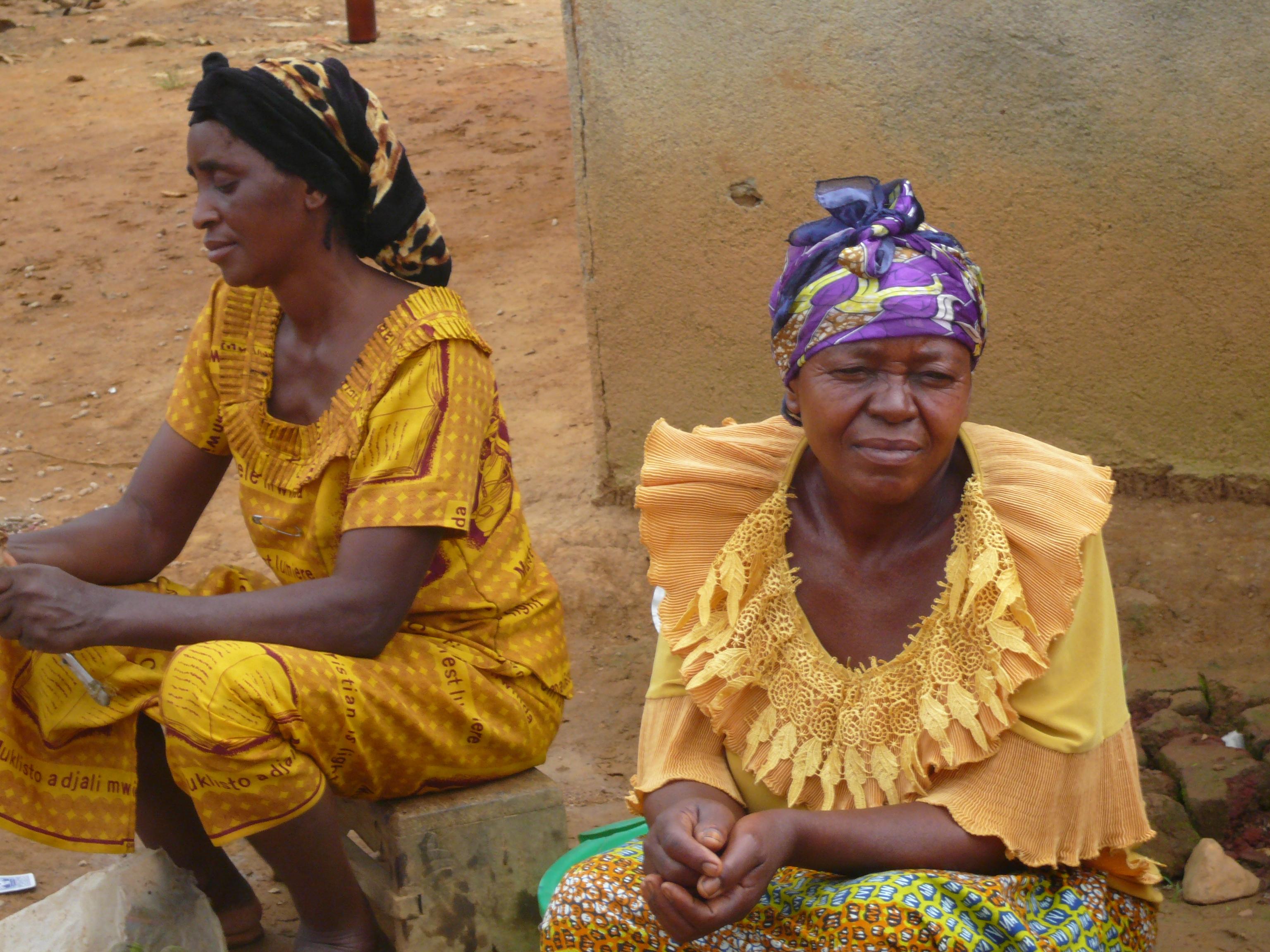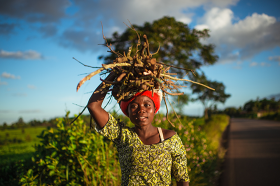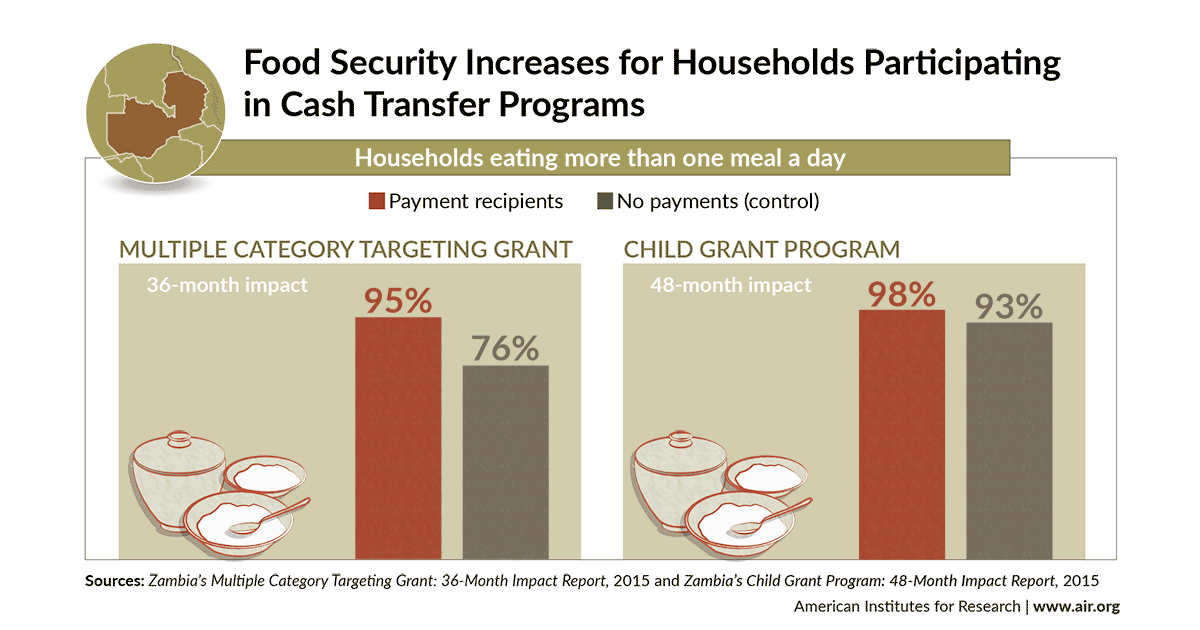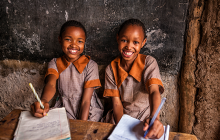Improving Lives Through Cash Transfers

Evidence demonstrates that cash transfer programs, growing around the globe since the mid-1990s, are a cost-effective way to improve the lives of poor households across many domains.
These programs can impact a wide range of development outcomes because recipients purchase food, invest in agriculture, improve their shelter, and pay for medical and education expenses. Cash transfers address poor households’ severe budget constraints and investment needs ranging across education, health, household, and business.
Read about our work in:
Cash transfer programs come in many designs that vary by conditionality, targeted population, size of grant, frequency of grant, and length of the program. They are one of the most studied development programs today with much evidence demonstrating their success, yet there remain questions about how variations in programs can affect their impact. Does adding resources or services to the cash transfers maximize their benefits? How can they be adapted for use in refugee camps or with migrant populations?
Key Lessons Learned
AIR’s extensive expertise in evaluating cash transfers provides a unique ability to assess commonalities and differences across cash transfer programs. AIR took this opportunity to synthesize findings across studies to identify lessons for designing cash transfer programming.
While impact evaluations are an essential component for creating a rigorous evidence base on the effectiveness of cash transfer programs, mixed-methods evaluations of program design and implementation fidelity are critical to understand how cash transfer programs work.
Process evaluations and implementation research further the understanding of cash transfer programs by focusing on distinctive design aspects in combination with implementation and may help to uncover why specific cash transfer programs did or did not achieve their targeted outcomes.
We offer these recommendations and lessons learned so policymakers can improve cash transfer programming using the findings from process evaluations and operational assessments of cash transfer programs conducted by AIR:
- Beneficiaries reported cash transfers were too low in seven out of 12 AIR studies on cash transfers. We recommended that programs use amounts adjusted for household size or amounts tied to a particular goal (e.g., average school expenditure).
- Five of the 12 studies documented payment irregularities, often finding that transfer payments occurred late or that payments were initially made at the wrong amount.
- Ten of the 12 studies showed a lack of efficient grievance and complaint mechanisms. Using barrier-free approaches that can maintain anonymity, such as involving local focal points or toll-free phone lines, helped to engage recipients.
- Five of the 12 studies found distribution challenges, often in cases where distribution occurred through a standalone system for the transfer rather than through the banking system. Several programs were successful in leveraging existing systems or resources.
- Targeting was perceived as more accurate and impartial when community members were not actively involved in the selection of recipients.
- Nine of the 12 cash transfer programs struggled to communicate eligibility criteria clearly to eligible and non-eligible households. Simplifying eligibility criteria led to less confusion among beneficiaries.
- Overall, cash transfers may achieve even larger positive effects when they are able to address some of their implementation challenges.
Our Cash Transfer Work
Costa Rica
Evaluation of the Conditional Cash Transfer Program Avancemos
The Conditional Cash Transfer Program Avancemos Program was developed by the Government of Costa Rica to combat the rising problem of drop-out and abandonment in secondary school. The 2015 evaluation studied the relevance, effectiveness, efficiency, impact and sustainability of the program.
Democratic Republic of the Congo
 Alternative Responses for Communities in Crisis (ARCC) II Program in the Democratic Republic of the Congo (Mixed Method Evaluation)
Alternative Responses for Communities in Crisis (ARCC) II Program in the Democratic Republic of the Congo (Mixed Method Evaluation)
Existing evidence about cash transfers indicates that providing cash in humanitarian crises may be an efficient way of helping people and stimulating markets. In order to help fill the evidence gap on cash transfers in humanitarian settings, AIR researchers compiled and analyzed data and lessons learned from the ARCC II program in the Democratic Republic of the Congo to examine 1) whether cash-based interventions contributed to the program’s overall objective of improved well-being and reduced vulnerability for children and households in humanitarian and transition settings; 2) if program beneficiaries had increased access to essential goods and services and livelihood opportunities; and 3) what the program's effects were on a broad scope of indicators reflecting well-being and food, material, and financial vulnerability.
Lebanon
UNICEF Cash Transfer to Syrian Refugees in Lebanon (Impact Evaluation)
Lebanon has one of the highest per-capita ratios of registered refugees in the world. Out of a population of 5.9 million, 1.5 million are displaced Syrians. Most Syrians arrived with limited savings and have struggled to earn steady incomes to meet their families’ basic needs, such as food, healthcare, and shelter. These basic needs tend to require immediate attention, which means that Syrian families often forgo education and its long-term benefits in favor of short-term needs. In 2016 the United Nations Children’s Fund (UNICEF), in partnership with the United Nations World Food Program, started piloting an education-based cash transfer program designed to lower or remove barriers to primary school aged Syrian children’s school attendance, including financial barriers and reliance on child labor.
Madagascar
UNICEF Cash Transfer for Promoting Secondary School in Madagascar (Impact Evaluation)
The socioeconomic situation in Madagascar has deteriorated over the past decade. Children in Madagascar face direct consequences of this poverty. About 47 percent of children are chronically malnourished, 28 percent are engaged in child labor, and less than 40 percent of children complete primary school. Many children drop out of school before transitioning from one level of school to another. About 79 percent of children attend primary school, whereas school attendance drops to only 27 percent for secondary school. The Let Us Learn supplementary cash transfer augments the Monetary Transfer for Human Development to promote children’s transition to and continued enrollment in secondary school.
Malawi

Midline Survey Evaluation of the Malawi Social Cash Transfer Program / Baseline Survey Evaluation of Social Protection for Gender Equality and Resilience Program
Within the context of extreme poverty, the Malawi Social Cash Transfer Program (MSCTP) has been providing monthly unconditional cash grants to ultra-poor and "labor-constrained" households since 2006. Through this project AIR is engaged in two separate studies, a follow-up of the long-term impact evaluation of the MSCTP to assess its effect on participants and to understand what happens to households that exit the program; and an impact assessment of a series of complementary interventions through economic empowerment activities and access to social services on MSCTP households through the Social Protection for Gender Equality and Resilience (SP-GEAR) program in three separate districts.
Social Cash Transfer Program (Process Evaluation)
While social cash transfer programs have been piloted for a number of years in Malawi, they have only recently become more widely implemented. UNICEF Malawi is working with AIR to conduct a process evaluation of the Malawi SCT program, the objective of which is to help reinforce accountability, contribute to results-based management, and continuously drive service and implementation improvements by offering recommendations to improve operations and build skills.
Mozambique
Child Grant 0-2 Program (Impact Evaluation)
Women and children in Mozambique face considerable health and economic vulnerabilities, which compromise their well-being. Though some progress has been made in improving child safety and health, 42.3% of children under 5 are stunted due to poor maternal nutrition, poor child feeding practices, poor food quality, and frequent infections (World Food Program, 2018). Children experience stunting if their height-for-age is more than two standard deviations below the median, and it has adverse, long-term functional consequences for their futures.
This program aims to reduce child poverty, improve child well-being, and promote access to basic services for families. It has three components: a regular cash transfer, distributed to the primary caregiver of children ages 0-2; a social behavior change communication package around positive nutrition and hygiene practices; and family support services for the most vulnerable program participants. The United Nations Children’s Fund (UNICEF) Mozambique hired AIR and its partners to conduct a 24-month, longitudinal impact evaluation and process evaluation of this program’s start-up phase.
Based on the evidence that AIR generated, the Government of Mozambique decided to expand the "cash and care" model, aiming to reach 500,000 children for the period from 2022 to 2026 in 10 provinces. The expansion plan aims to cover approximately 20 percent of the children aged 0-2.
Turkey
Conditional Cash Transfer for Education (CCTE) for Syrians and Other Refugees in Turkey (Program Evaluation)
Although the number of refugee children enrolled in school in Turkey has increased significantly in recent years, a number of obstacles mean nearly 40 percent of Syrian children living in Turkey remain out of school. UNICEF Turkey contracted with AIR to conduct a rigorous program evaluation of the Conditional Cash Transfer for Education for Syrians and Other Refugees, which provides bimonthly cash payments to eligible households and targeted support in the form of child protection outreach visits to households with children deemed to be most at risk.
Zambia
Does Money Buy Happiness? Evidence from an Unconditional Cash Transfer in Zambia
The relationship between happiness and income is at the center of a vibrant debate, as emotional states are an important determinant of health and social behavior. This journal article discusses whether a government-run unconditional cash transfer paid directly to women in poor households had an impact on self-reported happiness.
Cash Transfers Explained: How Cash Empowers Poor Families in Zambia (Video)
Cash transfers are international development programs where donors or governments can give cash directly to targeted groups. In this video, David Seidenfeld dispels the myth that such programs create dependency and are a waste of money.
Multiple Category Transfer Grant Program (Impact Evaluation)
The Multiple Category Transfer Grant program in Zambia provides grants directly to poor, labor constrained households, empowering families to decide how best to meet their needs. In addition to eating more meals and being more food secure, results show families receiving the grants are improving their housing conditions, buying more livestock, buying necessities for children, reducing their debt, and investing in productive activities.
Child Grant Program (Impact Evaluation)
Zambia’s Child Grant cash transfer program provides grants directly to poor households with children under five years old, empowering families to decide how best to meet their needs. AIR conducted an evaluation and found gains greater than the value of the transfer size itself. Our researchers also explored how the program affected women's empowerment.
Zimbabwe
 National Harmonized Social Cash Transfer (HSCT) Program (Impact and Process Evaluations)
National Harmonized Social Cash Transfer (HSCT) Program (Impact and Process Evaluations)
A majority of Zimbabweans lack sufficient resources to provide nutritional meals, access to health care, school supplies, and clothing to their family on a regular basis. The HSCT focused on strengthening the household economy through the delivery of cash transfers in the form of a monthly stipend to households. AIR conducted an impact evaluation of this cash transfer program implemented in 3,000 households in Zimbabwe. Overall results were encouraging, given the brief 12-month period evaluated: the HSCT contributed to improving consumption and food security among smaller households, and improved resiliency through debt reduction, increased livestock holdings, and reductions in exposure to shocks.



